The Biggest Problem With The Expanding Universe

And why it might spell trouble for dark energy as we know it.
“That’s all regular matter, just five percent. A quarter is “dark matter,” which is invisible and detectable only by gravitational pull, and a whopping 70 percent of the universe is made up of “dark energy,” described as a cosmic antigravity, as yet totally unknowable. It’s basically all mystery out there — all of it, with just this one sliver of knowable, livable, finite light and life.” –Summer Brennan
The Big Bang is one of the most successful scientific theories of all-time, detailing how the Universe came to be the way it is today over billions of years of cosmic history. It tells us that we got our start from a hot, dense, uniform and rapidly-expanding state. We then evolved through a very particular set of stages as we expanded and cooled:
- we formed the first stable atomic nuclei,
- we formed neutral atoms for the first time,
- matter collapsed under gravity to form stars,
- the first star clusters merged together to form galaxies and large-scale structure,
- stars that burn through their fuel die and expel heavy elements into the Universe,
- and those heavy elements form new stars, rocky planets, and eventually, life.
Yet that very story doesn’t tell us how our Universe itself will continue to evolve into the future. The Big Bang gives us possibilities, but without additional information, it doesn’t tell us the answer.
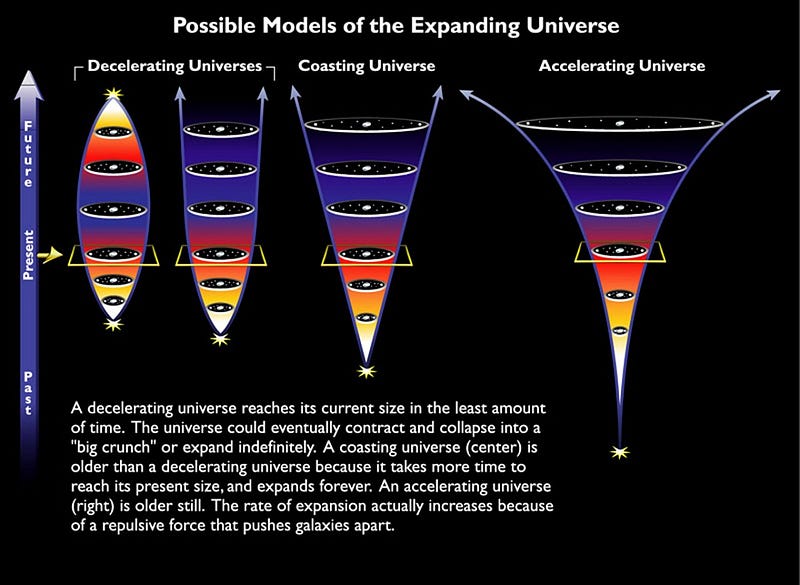
The expanding Universe is a race between two opposing forces: the initial expansion rate on one hand, striving to drive everything apart incredibly rapidly, and the force of gravity on the other hand, working to pull everything back together. The key to figuring out who wins — whether we recollapse, expand forever, live just on the border between the two or something else — is to both measure what the expansion rate is today and also how the expansion rate has changed/evolved over great spans of time.
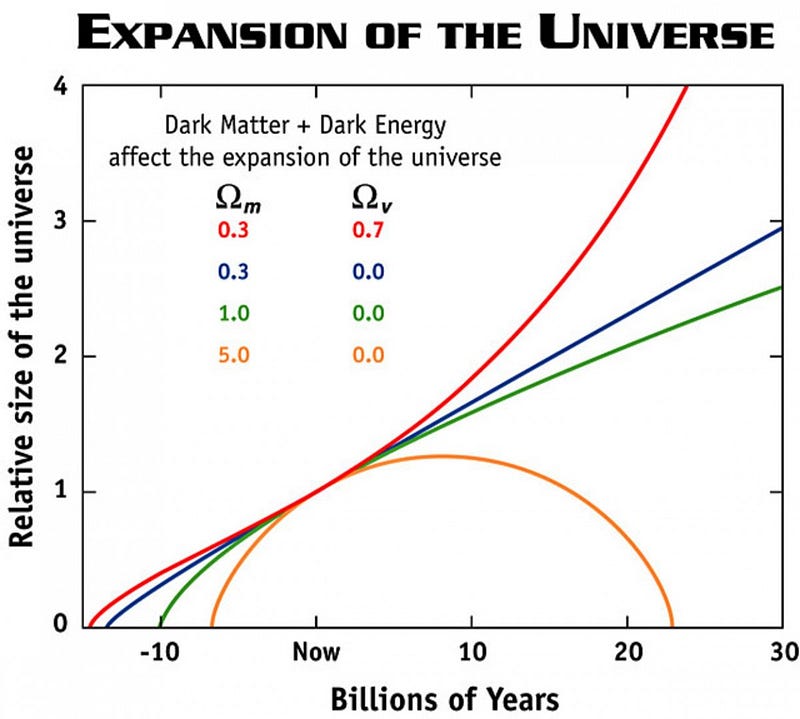
The reason we can do this is that different types of energy evolve differently in the Universe. Matter, for example, has a constant amount of total energy, but the energy density decreases as the volume of the Universe expands, so the matter density drops as the inverse cube of the Universe’s size. Radiation, on the other hand, also has its wavelength stretch in addition to decreasing with volume, meaning that the radiation density drops as one over the fourth power of the Universe’s size. Other types of energy — cosmic strings, domain walls, or dark energy — evolve according to their own unique equations as well. So if you can figure out how the Universe has expanded at each juncture in the past, what its rate was, is and how it changed, you can figure out exactly what the Universe is made out of, and also what its fate will be.
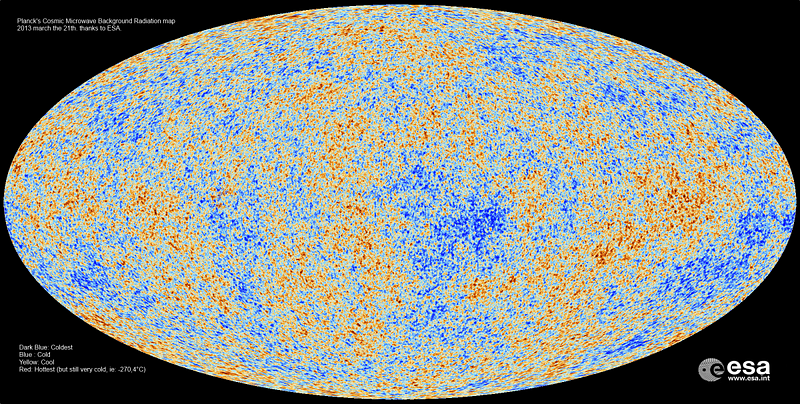
So the key is to make those measurements, and we have lots of different approaches. One is to measure the fluctuations in the cosmic microwave background (CMB): the leftover glow from the Big Bang. The pattern of hot spots and cold spots on different size-scales allows us to reconstruct an awful lot of information about the Universe, including what it’s made of and what the expansion rate is.
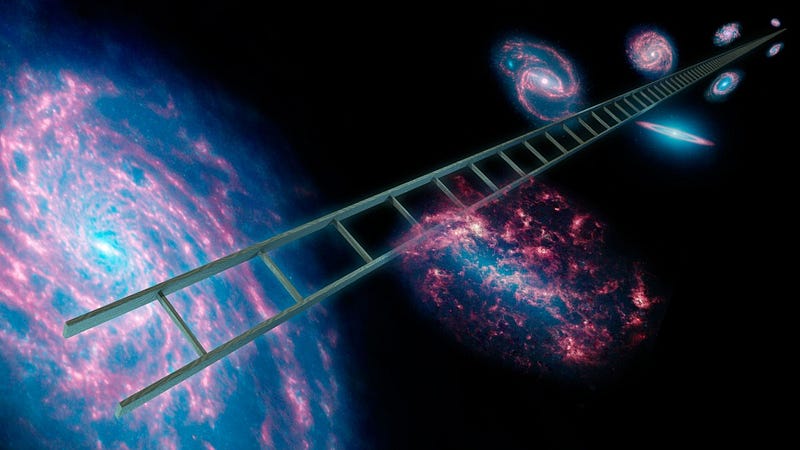
Another method is to use different classes of stars, galaxies or supernovae to build a cosmic “distance ladder.” The way you do this is by measuring the properties of an object that’s nearby while also determining its distance from you, then build your way to greater and greater distances by measuring intrinsic properties of that object that allow you to determine the distance farther away. This usually relies on a concept of a “standard candle” or “standard ruler,” the same way that you can know how far away a 60 Watt light bulb is from you just by measuring how bright it appears.
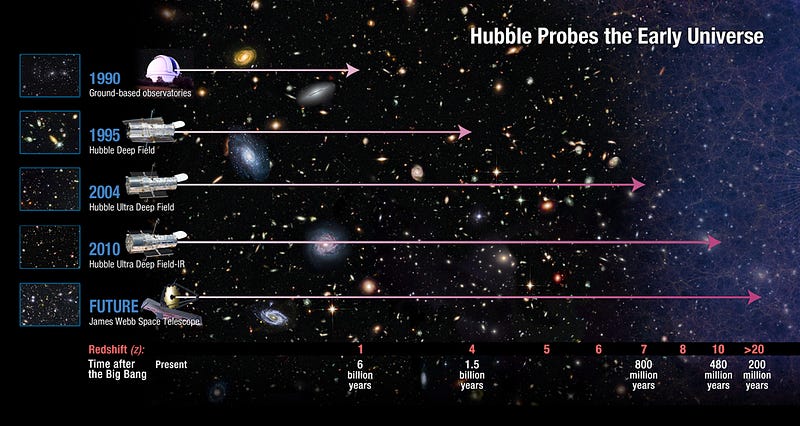
The problem is that, if you try and measure the rate of expansion from two different methods — one from the fluctuations in the CMB and one by building a cosmic distance ladder — you get two different results that don’t agree with one another.
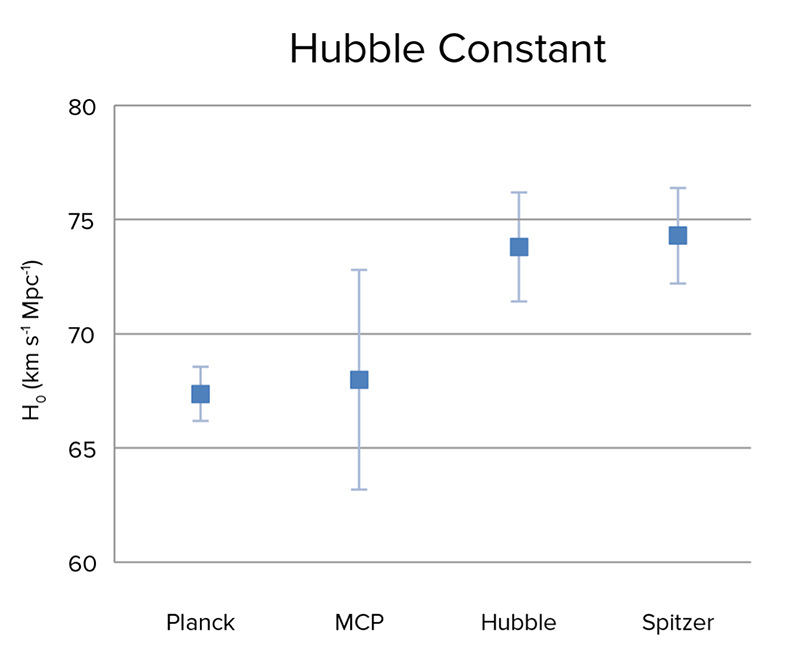
According to the CMB, the rate that the Universe is expanding today (the Hubble rate of expansion) is 67±1 km/s/Mpc, while according to the other (distance ladder) method, that rate is 74±2 km/s/Mpc. This might not seem like such a big deal, as you might say to yourself, “maybe it’s somewhere between the two values: 70 looks about right.” But these uncertainties are now so small that the two possible measurement values do not overlap. Instead, we’re left with only two possibilities:
- There’s a fundamental flaw in one of the methods used: perhaps the assumptions and inferences of the CMB are incorrect, or perhaps our inability to calibrate the smaller distances on the distance ladder are skewing us away from the true values.
- Or, more excitingly, perhaps both measurements are correct and they’re measuring different things, implying that some major component of the Universe, like dark matter or dark energy, is changing over time.
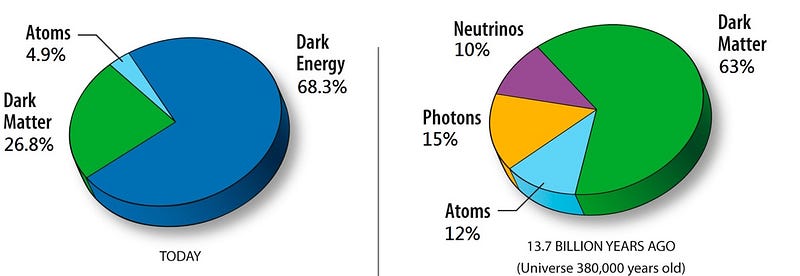
The bottom line, however, is that the measurements we’re seeing at late times tell us that the Universe is expanding about 8% faster than we would have expected based on the early-time measurements. Is there something funny happening in physics; is there perhaps an extra neutrino that’s playing games with us? Or is dark energy something different than what we thought, and does this mean the Big Rip scenario, where the Universe tears itself apart billions of years in the future, is likely after all?
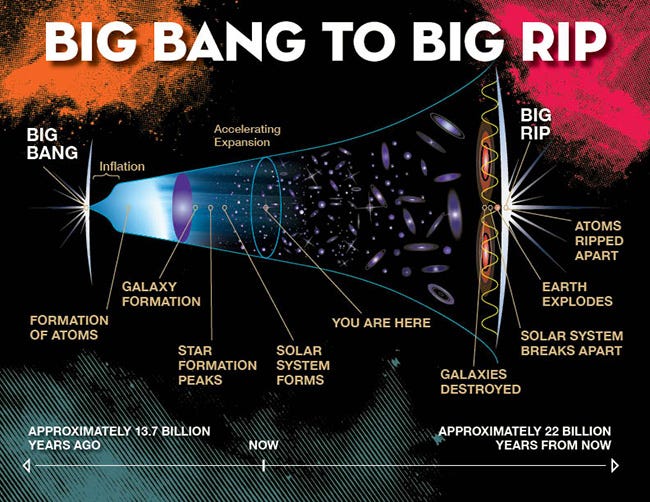
Right now, the only solution is to gather more and better information, as the answer itself is written in the history of the Universe. If we want to know for sure, it’s up to us to investigate and see what it tells us about itself!
This post first appeared at Forbes. Leave your comments on our forum, check out our first book: Beyond The Galaxy, and support our Patreon campaign!





